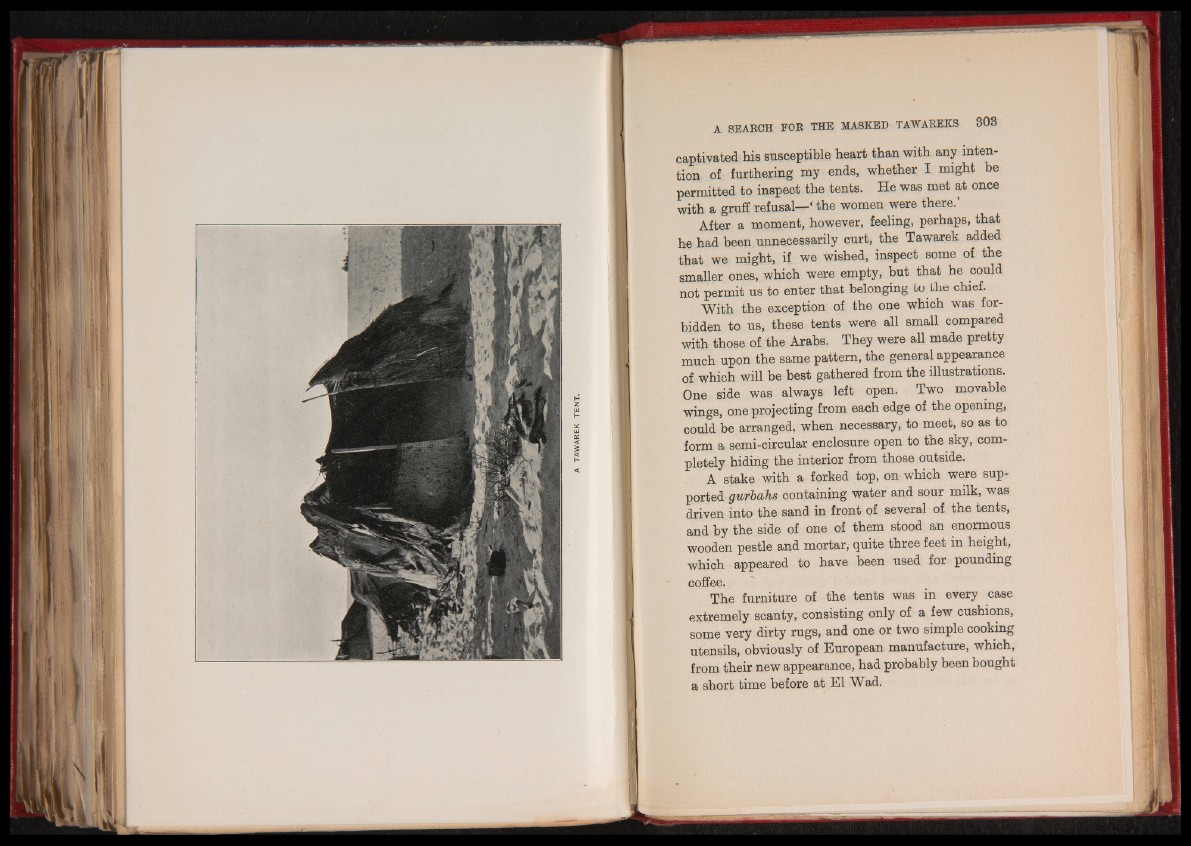
captivated his susceptible heart than with any intention
of furthering my ends, whether I might be
permitted to inspect the tents. He was met at once
with a gruff refusal—' the women were there.’
After a moment, however, feeling, perhaps, that
he had been unnecessarily curt, the Tawarek added
that we might, if we wished, inspect some of the
smaller ones, which were empty, but that he could
not permit us to enter that belonging to the chief.
With the exception of the one which was forbidden
to us, these tents were all small compared
with those of the Arabs. They were all made pretty
much upon the same pattern, the general appearance
of which will be best gathered from the illustrations.
One side was always left open. Two movable
wings, one projecting from each edge of the opening,
could be arranged, when necessary, to meet, so as to
form a semi-circular enclosure open to the sky, completely
hiding the interior from those outside.
A stake with a forked top, on which were supported
gurbahs containing water and sour milk, was
driven into the sand in front of several of the tents,
and by the side of one of them stood an enormous
wooden pestle and mortar, quite three feet in height,
which appeared to have been used for pounding
coffee.
The furniture of the tents was in every case
extremely scanty, consisting only of a few cushions,
some very dirty rugs, and one or two simple cooking
utensils, obviously of European manufacture, which,
from their new appearance, had probably been bought
a short time before at ,El Wad.